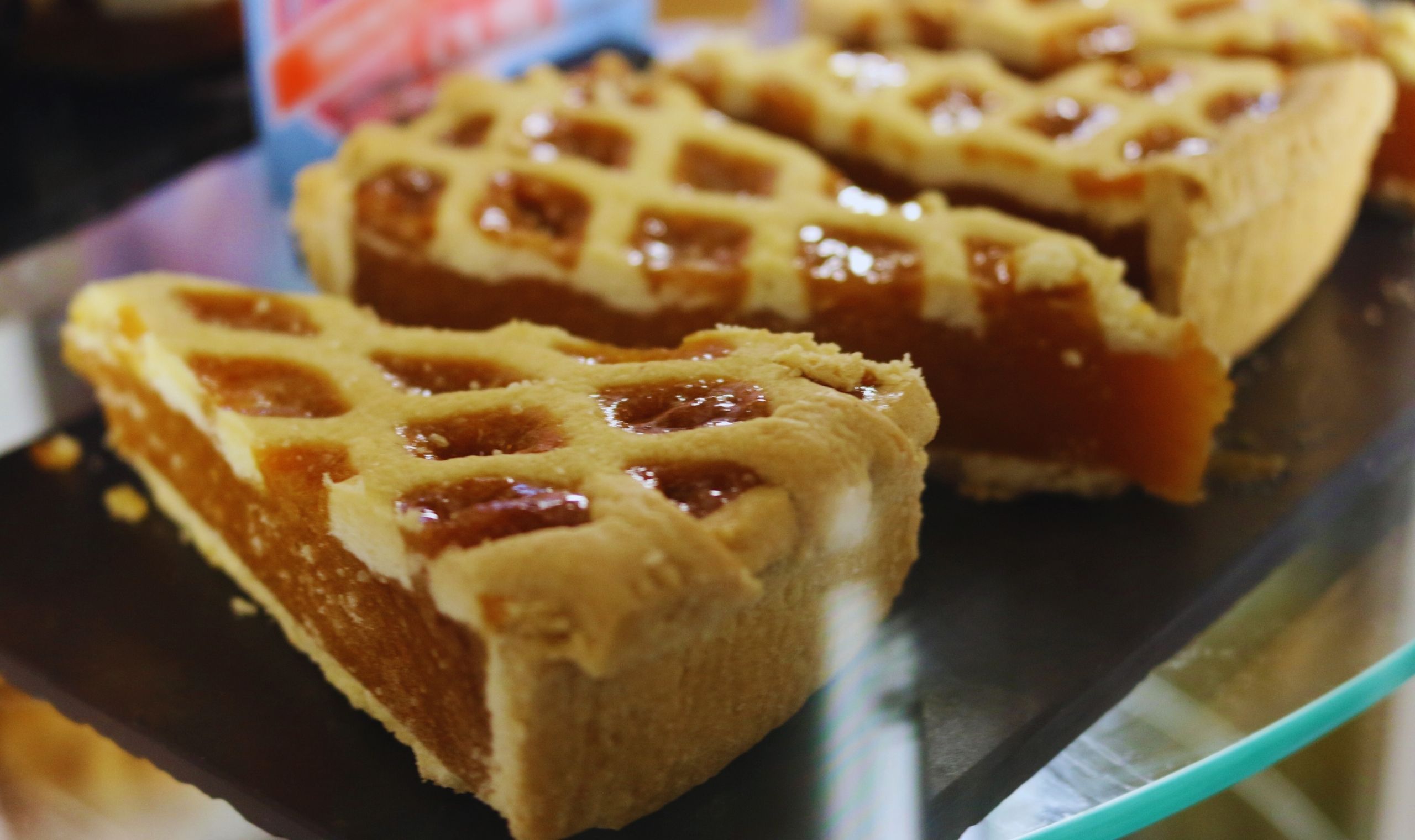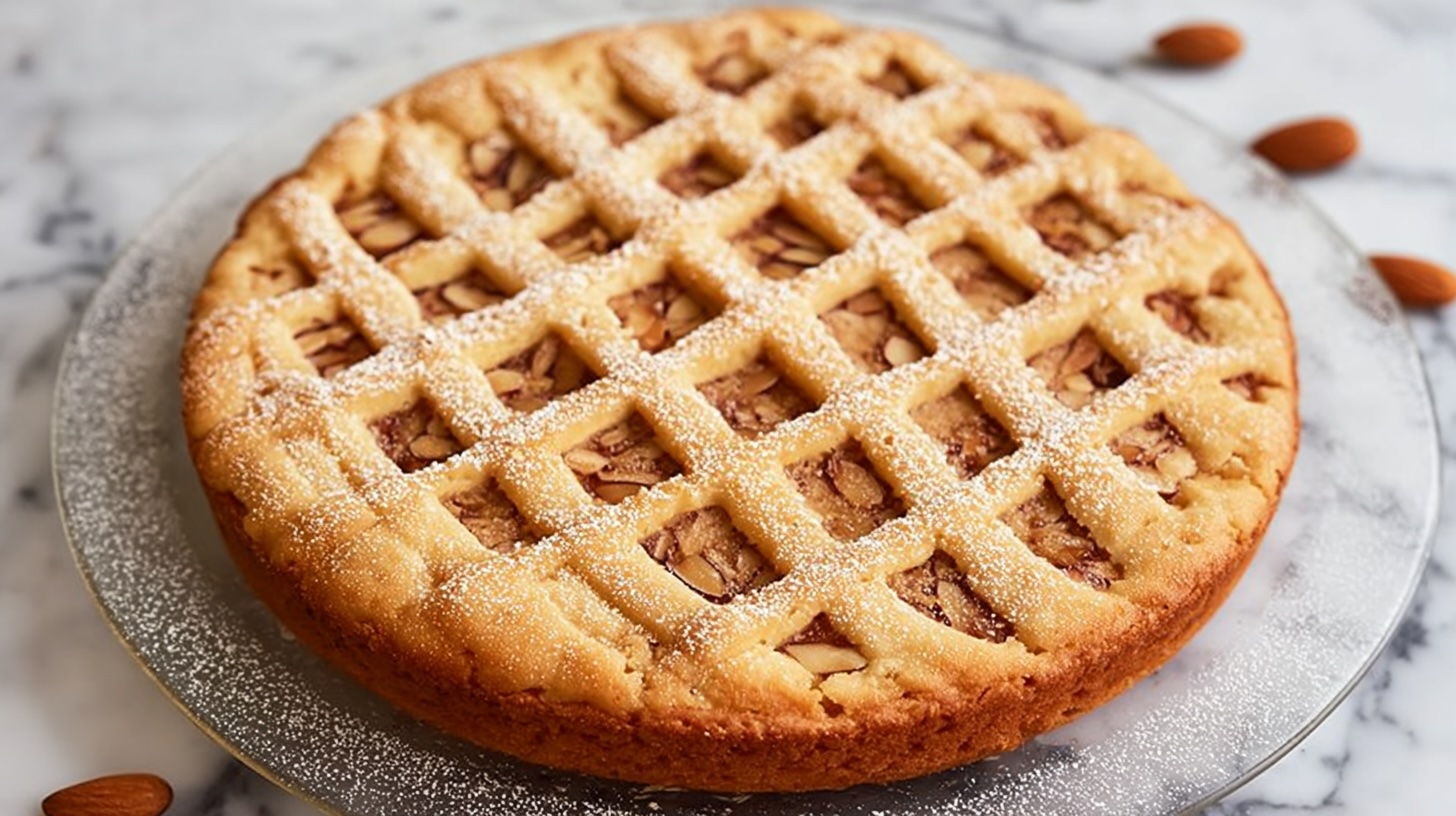Stollen: The Christmas Bread That Stole Our Hearts
Stollen is not just a cake, not just a bread—it’s a festive phenomenon wrapped in powdered sugar. Hailing from Germany, this dense, fruit-studded delight is a staple of Christmas markets, home kitchens, and holiday feasts. If you’ve never had the pleasure of biting into a slice, imagine a rich, buttery dough packed with candied citrus peel, almonds, raisins, and sometimes a hidden core of marzipan. It’s like the holidays decided to throw a party in your mouth.
The origins of Stollen go back to the Middle Ages, with the first recorded mention dating to 1329 in Dresden. Back then, however, it was a rather austere affair—made from flour, yeast, water, and oil due to strict fasting regulations before Christmas. It wasn’t until the 15th century that butter and milk were permitted, transforming Stollen from a dry, bland bread into the rich, decadent treat we know today. The shape of Stollen is said to resemble the swaddled baby Jesus, making it not just a delicious Christmas tradition but a symbolic one.
Dresden Stollen, or Dresdner Christstollen, is the most famous version and even has a protected designation of origin, meaning only Stollen made in Dresden following strict guidelines can bear the name. Other variations include Mohnstollen (with poppy seeds), Nussstollen (with nuts), and Quarkstollen (made with quark cheese for a moister texture). But the most indulgent of all is the Marzipanstollen, which hides a luscious core of almond paste for extra richness.
So what makes Stollen so special? Apart from its long history and festive symbolism, it’s all about the flavour and texture. A well-made Stollen is dense yet soft, sweet but not cloying, and bursting with the warming spices of Christmas. The powdered sugar coating not only looks like a snowy blanket but also helps preserve the loaf, allowing it to develop deeper flavours over time.
Stollen pairs wonderfully with a steaming cup of coffee, a glass of mulled wine, or even a crisp Riesling if you fancy something more refined. It also plays well with other festive treats—serve it with a selection of cheeses, spiced nuts, or even a smear of butter for ultimate indulgence.
While it’s undeniably a treat, Stollen does have some redeeming qualities. The dried fruit offers a dose of fibre and vitamins, almonds provide healthy fats, and, well, let’s just say that a little bit of festive indulgence is good for the soul. Moderation is key, but who are we kidding? You’ll probably go back for another slice.
If you want to experience Stollen at its finest, Germany is the place to be during the Christmas season. Dresden’s Stollen Festival is an event dedicated entirely to this beloved bread, complete with a giant Stollen paraded through the city. But you don’t have to book a flight—many European bakeries and speciality food shops stock authentic Stollen during the holidays. And, of course, the best way to enjoy it is by baking it yourself.
Classic Stollen Recipe
Ingredients:
- 500g plain flour
- 100g sugar
- 1 packet (7g) dry yeast
- 200ml warm milk
- 150g butter, melted
- 1 egg
- 1 tsp vanilla extract
- 1 tsp ground cinnamon
- 1/2 tsp ground nutmeg
- Zest of 1 lemon
- 200g mixed dried fruit (raisins, currants, candied citrus peel)
- 100g chopped almonds
- 200g marzipan (optional, for a richer version)
- 50g melted butter (for brushing)
- Icing sugar (for dusting)
Instructions:
- Dissolve the yeast in warm milk and let it sit for 10 minutes until frothy.
- In a large bowl, mix the flour, sugar, cinnamon, nutmeg, and lemon zest.
- Add the yeast mixture, melted butter, egg, and vanilla. Knead into a smooth dough.
- Mix in the dried fruit and almonds, ensuring even distribution.
- Cover and let rise in a warm place for 1.5 hours or until doubled in size.
- If using marzipan, roll it into a log. Roll out the dough into an oval and place the marzipan in the centre, then fold the dough over to create the traditional Stollen shape.
- Place on a baking tray lined with parchment and let rise for another 30 minutes.
- Preheat the oven to 180°C. Bake for 35–40 minutes until golden brown.
- While still warm, brush generously with melted butter and dust heavily with icing sugar.
- Let it cool completely before slicing (if you can wait!).
Stollen is best enjoyed after a few days when the flavours have had time to mingle and develop. If you can resist eating it straight out of the oven, that is. Either way, one bite and you’ll understand why this festive bread has been cherished for centuries.




1 comment